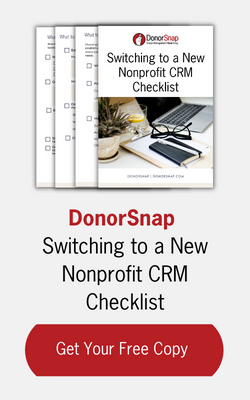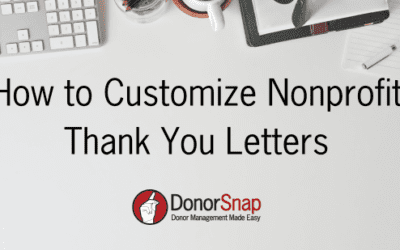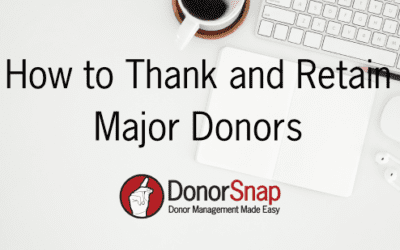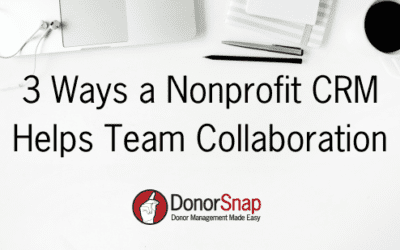Creating a thoughtful welcome to your organization is one of the best ways to retain new donors. According to the Fundraising Effectiveness Project data, in 2020 first-time donors only had a retention rate of 19.2%. If nonprofits can get first-time donors to give again the retention rate will increase.
So how can you retain first-time donors? We have outlined how to create a warm and effective welcome to your organization so donors keep coming back.
How to Welcome and Retain New Donors
Engaging a first-time donor requires understanding what motivated them to give and then nurturing those different reasons. From there you should establish a thoughtful thank-you process that is personalized to new donors. Last, set up a welcome email series that introduces all the facets of your organization in a thoughtful way.
1. Understand What Motivates Donors to Give
If someone donated to your nonprofit, then your message resonated with them in some way. But it is important to understand what motivates people to give, so you can continue to nurture that relationship. Some of the main reasons people give, according to research done by Drs. Sara Konrath and Femida Handy include:
- Trust (seeing charities properly use donations for the public good)
- Altruism (concern or compassion for those less fortunate)
- Social benefits (nonmonetary benefit, being part of a social network)
- Tax benefits (monetary private benefit)
- Egoism (enhance reputation, experience good feelings about oneself)
While you may not know what inspired each individual donor to give, you can touch on all of these points as you welcome someone to your organization.
How to Build Trust With New Donors
One of the first reasons people give to an organization is based on trust. While you likely gained their trust before they gave, you should continue to exemplify trust among your supporters. One way you can do this is by doing what you say you are going to do. When you solicit a donation, you should be clear about where the money is going to go. Then deliver impact through powerful storytelling or impact reports.
How to Nurture Altruism with First-Time Donors
If someone donates based on altruism it is because they have genuine compassion for a cause. You can nurture altruism with first-time donors by providing stories about the people/area you serve. Donors are more likely to resonate with individual stories vs. overarching statistics and facts. So ensure you have a bank of powerful stories that will tug at the donor’s altruistic heartstrings. You can start nurturing this in your thank you letter and continue to include stories in your newsletters and across social media.
How to Provide Social Benefits to First-Time Donors
Another common reason people give to an organization is for social benefits. To nurture this you should focus on building a strong community of supporters and making it open and welcoming to new donors. Nonprofit events are a great way to build community among your supporters.
Also, stay in touch with your supporters often through various forms of communication and give them opportunities to connect with one another. Regularly share ways people can participate in the community aspect of your organization whether it be through community events, volunteer opportunities, or across social media.
How to Promote Tax Benefits to First-Time Donors
Many people donate to organizations for tax benefits. While this is probably not the only reason they give, it is important to make it easy to redeem these benefits. Make sure that your donor acknowledgment letters clearly state the tax benefit for their donation.
Also, the use of year-end contribution statements makes it easy for donors to file their taxes. The best way to promote and nurture tax benefits to first-time donors is to make it easy for them. Year-end contribution statements summarize their year of giving and are sent out at the beginning of the new year. Providing these statements is a great way to keep first-time donors giving again.
How to Nurture Egoism with First-Time Donors
Some donors will give to feel good about themselves or for the sake of their reputation. There are a number of ways you can nurture egoism. One thing you should do regardless of a donor’s motivation is to thank them quickly and thank them often. Always make the donor the hero of your story. Also, publishing yearly gratitude reports that list all of your donors is a great way to make donors feel personally recognized for their gifts.
2. Establish a Thoughtful Thank You Process
Thanking your donors is one of the most important aspects of donor retention. When you communicate with your donors you should always focus on personalization. This is because 71 percent of donors feel more engaged with a nonprofit when they receive content that’s personalized. Create a custom thank you letter for new donors that acknowledges this is their first gift. Your letter should also include information on what to expect as a new member of your organization. This will help make them feel like you truly see them and are welcoming them into your organization.
DonorSnap Tip: If you use DonorSnap you can set up unique batch codes for individual donations. When you receive a new donation flag them as a new donor so they receive the new donor thank you letter.
3. Set up a Welcome Email Series
It can be tempting to let a new donor know everything about your organization as soon as they give. Unfortunately, people’s attention spans are short and you don’t want your new donor’s eyes to glaze over. Your first focus should be on thanking them and providing them with a warm welcome. From there you can establish a thoughtful welcome series. Try to break out everything your organization does into bite-sized pieces of information. Then set up an automated welcome email series to send out this information at a set interval.
Ideas to include in your welcome series
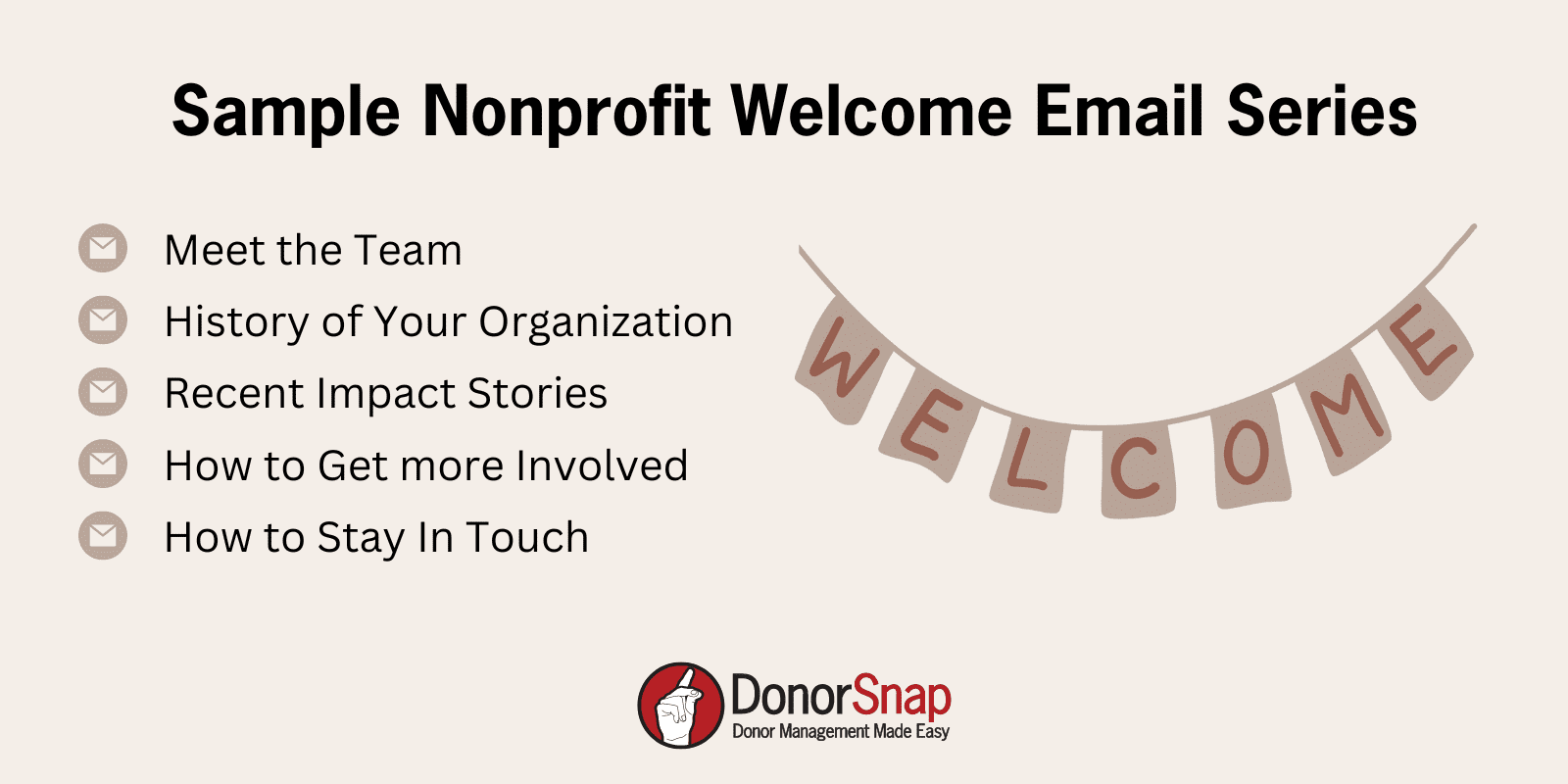
Your welcome email series can include information you feel is more pertinent to your cause. Below is a list of ideas to help you get started! Consider timing out these emails starting one week after the first donation. From there pace them about 2 weeks to a month apart until the series is complete.
Meet the Team
No one wants to give to a faceless organization. One of the best ways to welcome a new donor is to show the actual people behind your organization. A meet-the-team email is a great way to get personal right off the bat. Include photos and bios of your team members. You can also include links to your LinkedIn profiles for an additional opportunity to connect.
History of Your Organization
The more someone knows about your organization the more they can advocate for you. Consider creating an email with a brief history of your organization. Include a timeline with key milestones. If you have a full history of your organization you can link to that page from the email. Showing how far you have come will touch on both the altruistic and trust motives of your new donors.
Impact Stories
Your nonprofit has done a lot and new donors don’t know everything you have done. Another email to include in your welcome email series could be impact stories of people/areas you have served in the past. Gather up your most inspiring stories to really tug at their heartstrings and make them feel good about joining your organization.
An Invitation to Become More Involved
As mentioned before, many people give for social benefits. Make sure you cater to this crowd with an email that shares everything about how to get social with your organization. For example, include links for them to follow you on social media. Also, direct them to your volunteer page with volunteer opportunities. Don’t forget to share your calendar of events with them as well!
Collect New Donor Preferences
The more you know about a donor the better you can serve them. Your donation forms should only collect basic contact and donation information. However, as you engage more with your new donor you can reach out again to collect additional preferences. Create a “getting to know you better form” where you can collect more personal details on your donors. This could include contact preferences, areas of interest, how they heard about you, why they gave, and so on. Think strategically about what additional information you want to collect and how you can use it to further segment and nurture your donors.
DonorSnap Tip: The Automated Task Manager will take care of managing your entire welcome email series. Create your welcome email series to be based on the donor’s first donation date, create your emails with personalization, and let the system take care of the rest for you. There’s no exporting data to another email system, and you can count on your new donors having the opportunity to learn all about your organization over time.
Final Thoughts
Engaging a new donor in the right way will increase their chances of giving again. New donors need to feel welcomed to your organization in order to continue supporting you. The best way to welcome a new donor to your organization is to first understand what motivates them to give. Once you understand their motivations you can nurture those different aspects. From there establish a thoughtful thank you that is personalized to first time donors. Last, create a welcome email series that will slowly and thoughtfully introduce the new donor to your organization.

